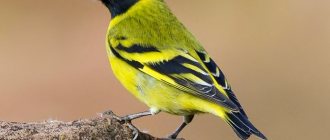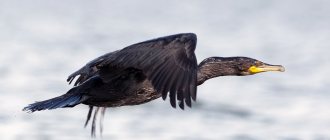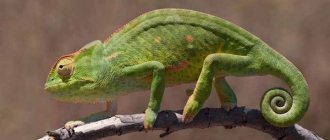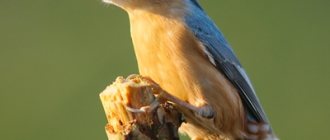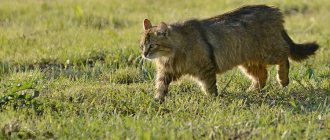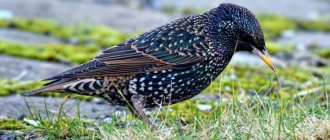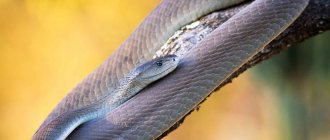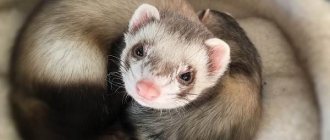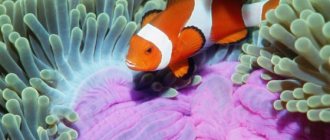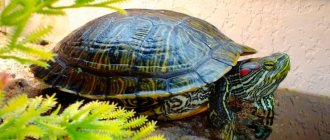City dwellers are accustomed to seeing birds, jackdaws, feeding with pigeons. However, not everyone knows the interesting features of their behavior and character. Meanwhile, these birds deserve attention - if only because they have been living next to humans for hundreds of years. In addition, they are not devoid of intelligence and can be tamed.
The jackdaw is the closest relative of the crow and rook. These birds are united by belonging to the same family - corvids of the passerine order. The jackdaw differs from its relatives in its smaller size.
What does a jackdaw bird look like?
The appearance of jackdaws may not seem particularly remarkable. One might even say modest in the eyes of the common man. They have a rather stocky build. And although they are small in length, they reach 39 cm, with a weight of up to 265 g, and resemble a rook and a crow. Jackdaws are representatives of corvids, a group of passerines. If we look at the color of this small, agile bird, it turns out that it has quite a few shades from light gray to blue-black. The wings and tail of the jackdaw are precisely painted black, with a shimmering blue color. The back is dark gray, the head behind and on the sides is light gray. Some individuals have a beautiful ash “collar”. The wings of adults have a characteristic metallic sheen. The beak is quite dense, strong, and black in color. In jackdaws, the beak comically outweighs the mass of the head and tilts it to the side. The paws are also jet black. The halo of the pupil is sky blue. The older the individual, the lighter the color of the halo. Color does not vary according to gender. When growing jackdaws molt, unevenness and dullness of plumage can also be observed.
Jackdaw photo
Sizes and color features
The plumage of male birds fades more with age and wear, especially just before molting. Western jackdaws undergo a complete molt from June to September in the western parts of the habitat, and a month later in the east. The purple sheen of the wings becomes most noticeable immediately after molting. Between June and September, partial molting occurs in the young. Between July and September the full annual period occurs for adult birds.
Immature birds have dense and less demarcated plumage. The head has a sooty black color, sometimes with a slight greenish tint and brown bases of the feathers. The back and sides of the neck are dark gray, the underside is grayish or smoky black. The tail has narrower feathers and a greenish sheen.
There are slight differences in the size of the bird depending on its habitat. The main differences are the presence or absence of a partially whitish collar at the base of the nape, variations in the shadow of the nape and the tone of the bottom.
Jackdaws in Central Asian countries have larger wings, Western populations have a darker tone. The color of the tail becomes darker further north in mountainous areas with a humid climate, and paler in other places.
East Asian jackdaws have sharp distinctive features in coloration and are often considered a special species; they are dimorphic, except for birds with a gray color, “piebald” ones are often found. There are also ecological differences in residence patterns, details of nesting life, etc.
Where do the birds live?
The jackdaw's habitat is quite extensive throughout Europe, from the Atlantic to Western Asia, except for the northern regions. You can also observe this bird in Africa, namely in Algeria and Morroco. About 70% of individuals, which is from 20 to 90 million, nest and live in Eurasia. In the east, the Daurian jackdaw predominates. She is the closest relative of the common jackdaw. The only differences are in color - the Daurian jackdaw is lighter. In Russia, it can be observed in Altai and Primorsky Krai. This bird can be seen on the streets of cities and villages. Together with pigeons, the jackdaw shares food and prefers to live next to humans.
She loves places with steep cliffs, abandoned buildings and crevices. Very often you can find jackdaws on the periphery. They live in close proximity to humans in cities and villages. Jackdaws can be found in parks and in bridge structures, floodplains and city landfills. Flocks arrive in the morning to feed, and in the evening they fly to parks and squares to spend the night. Jackdaws are very sociable and will gladly fly to your farm plots to feast on the harvest. But in open spaces, such as fields and meadows, jackdaws try not to linger, preferring secluded places.
Types of jackdaws
Scientists identify several subspecies of jackdaw. The characteristic features differ insignificantly in size and color. For example, the color and shape of the beak of the Alpine species. She has it pointed and yellow, similar to an eagle's. The differences are mainly characterized by the location of residence. In Germany the color is darker, while in Algeria it changes to slate light. In Russia, the jackdaw is black, and in China and the Primorsky Territory it is gray. Chicks of jackdaws squeak very funny, thereby expressing hunger or a call for help. Adults emit a long “Crya” sound. But in captivity, the vocabulary of jackdaws expands much. And if the owners are not deaf and mute, then soon you can hear whole meaningful words or phrases from your grown pet.
Photo of Alpine jackdaw
What do jackdaws eat?
The tick bird is independent and easily obtains food in conditions of free natural feeding. During the breeding season, she requires animal feed. The jackdaw feeds on beetles, bats, lizards, eggs of other birds, worms and other animal food that it manages to obtain. It is an omnivorous bird and plant foods can be such as: grains and berries, vegetables and fruits, food scraps. But in captivity, feeding a chick is not so easy. You will have to hand feed the little jackdaw for about two months, every 2-3 hours. Then it’s true, you won’t find a better friend. The bird will love care, appreciate attention and become very friendly, showing natural qualities, a smart mind and a persistent, impudent disposition. People feed the galchats raw meat, bread, worms and small insects. As the little jackdaw grows up, she eats mixed grains, vegetables, fruits and other nutritious foods from the table.
Galochka eats
Diet
The jackdaw is a bird that is not a convinced vegetarian and loves to eat spiders or other insects, earthworms, and mollusks. When terrain conditions permit, black birds can hunt small rodents such as voles and mice.
In addition to food of animal origin, the diet of jackdaws includes grains and seeds, fruits and berries. Garbage cans and landfills are real canteens for birds with an abundance of varied food. You can always find something tasty in these places.
Feathered screamers are very prudent and thrifty. When they manage to obtain food in large quantities, they store supplies under the roots of trees, under leaves or in other secluded places. In non-flying bad weather, when hunger may threaten, such pantries help them out a lot.
Is the jackdaw a migratory bird or not?
But the migration of jackdaws is quite sparse. Even though they are migratory birds. With the onset of cold weather, jackdaws gather in flocks and fly away to the southern regions. Leaving nests and food for more mature individuals, which remain to winter in the cold climate of temperate latitudes. It turns out that the jackdaw is a sedentary bird and the migration issue concerns not many representatives of corvids, but only those who live in the northern regions.
Photo of a check mark
Spreading
The jackdaw is a widespread bird. Its area of residence covers all of Europe and Western Asia, with the exception of the northern regions. The bird can also be found in North Africa.
In the north and east of the range, the birds are migratory; for the winter they move to its southern regions
. Most old individuals do not fly south for the winter, but remain in nesting areas, especially if there is enough food here.
It is worth noting that in East Asia, instead of the common jackdaw, its close relative, the Daurian jackdaw, lives. The two species have similar appearance and voice.
The number is stable and reaches 15-18 million individuals. Therefore, these birds are not yet endangered.
Nesting
Nesting begins for jackdaws in March. By this time, the temperature is warming up, and the jackdaws begin to build their families and build nests. Families are created once in a lifetime and forever! Partners become mated, build nests, care for offspring, and help each other. This reverent attitude towards the family is very touching and makes a person think that even such small birds are smarter than many people. After all, they do not abandon their offspring, do not destroy families and do not lead a lifestyle that is contrary to the creation of a family.
With the onset of spring, jackdaws leave the flock and begin building nests. Hollow trees, abandoned buildings, stone crevices, and wooden abandoned houses are preferable. The jackdaw also builds nests in parks, trees, gardens and squares. But secluded places are preferable. This may be due to the high risk of looting and destruction of the offspring and the nest itself. And for conservation purposes, the jackdaw looks for more protected places. Hidden from the unnecessary attention of other representatives of the fauna.
Photo of jackdaw
Reproduction
Even at a young age, birds find a partner; pairs are created once and for life. The relationship between the spouses is quite tender: the birds take care of each other and comb their feathers. You can often watch a male feeding his mate.
The mating season begins in March. In April, birds begin building nests . The nest of jackdaws is rough, flat, made of twigs, leaves, paper and rags. To strengthen it, lumps of earth and animal feces are used. The bottom of the nest is lined with soft materials: blades of grass, wool, down and feathers.
Jackdaws take a thorough approach to arranging a nest - after all, it can be used for several years. Not only males, but also females work on building a new nest or repairing an old one.
At the end of April - beginning of May, the jackdaw lays 4-7 eggs of a light blue or greenish-blue hue with brown specks. The incubation period lasts 17-20 days. The chicks that are born are naked and blind. Both parents feed the offspring. After a month, the young birds can already fly, but the couple continues to feed them for about two more weeks.
Only when young jackdaws have fully formed plumage do they begin an independent life. Birds unite in flocks, sometimes of enormous size (several hundred individuals). Jackdaws often mix with rooks.
Enemies of the tick birds
And there are plenty of “well-wishers”! Jackdaws become prey for squirrels and their fellow ravens, more predatory birds. The nests are plate-shaped made of twigs, wool, pieces of bark and earth. All materials obtained by jackdaws participate in the construction of the nest. These include pieces of cardboard, paper, film, animal hair, sticks and branches. Both individuals build the nest, but the female incubates the eggs. While the male flies off to hunt and feeds the entire family, supplying the female and cubs with provisions. As soon as the chicks can be left alone, both individuals fly to find food.
Jackdaw in the snow
INTERESTING FACTS, INFORMATION…
- People once believed that if a jackdaw had a tongue, it would be able to speak like a human. This is a misconception because birds do not need tongues to make sounds.
- Males and females make sounds similar to chattering. They resemble meows.
- The jackdaw is easily tamed and is therefore often kept in homes.
- Sometimes jackdaws sit on the backs of sheep and pluck wool from there, which they then use to make their nests.
- The famous ethologist Konrad Lorenz conducted thorough studies of the social organization of jackdaws.
- Jackdaws sometimes soak their food in water before eating it.
How long do jackdaws live?
Jackdaws live in the wild for up to eight years. Due to their comfortable and serene lifestyle, they can live up to 12 years in captivity. What is noteworthy is that in ancient times jackdaws were exterminated everywhere. They caused sufficient, by those standards, damage to agriculture, which forced people to come up with all kinds of traps for feathered pests. In the sixteenth century, jackdaws were widely hunted and the birds were mercilessly exterminated by farmers and peasants.
Photo of a check mark close up
Jackdaw bird at home
The attitude and interaction of jackdaws with humans today is friendly. Jackdaws live quietly next to humans. They use artificial feeders made by humans and even begin to talk during training, when living together with a person. Soviet society can count many examples when eminent scientists, professors, and artists accepted these birds into their personal lives. They fed, cared for, observed and interacted with the bird. They found her character funny and wrote poems and stories about jackdaws. Sergei Sergeevich Turov, a famous professor at Moscow State University, had a jackdaw as his pet. Eduard Nikolaevich Uspensky, a famous children's writer, rescued, went out and raised a little jackdaw, who often, judging by the photographs, loved to sit on his shoulder.
Photo of Siberian jackdaw
Relationship between a jackdaw and a person
It should be noted that interaction with birds has a beneficial effect on human health and well-being. Jackdaws, in particular, are very sociable and eager to make contact. They allow themselves to be petted, fed, and looked after. The bird can perform tricks, talk and show sympathy or, conversely, hostility towards this or that person. In a word, she is intellectually socialized and smart. Interacts with children with interest. Gets used to it and knows its owner. The person who raised and fed the jackdaw will love him all his life. And vice versa, he will definitely remember the offender. In any case, this is a unique case of interaction between living nature and humans, an example of harmonious contact and a pleasant life together.
Do you have any change? Come on, jump.
Lifestyle
These birds are presented as intelligent creatures with nimble habits, a loud voice and a desire to be among people; they are indeed very social. Jackdaw loves to be in the company of his best friends, the rooks, until they fly away. Together, they walk through the gardens and fields, communicating through noisy cries of “kaa - kaa.” The total number of jackdaws is 4−8 million pairs . They live in pairs and form flocks of up to several dozen birds.
The modern jackdaw more often lives near human habitats, where there are old, non-residential buildings on which it nests or in areas of five-story buildings with openings under the roof. In the new quarters of the city, among block and panel houses, she does not find a place for herself. She is comfortable being close to people, which makes it easier for her to find food.
When a flock of jackdaws lives in a forest area, they nest in old, tall trees with hollows. In addition, they are found on rocky coasts, near agricultural lands and groves.
